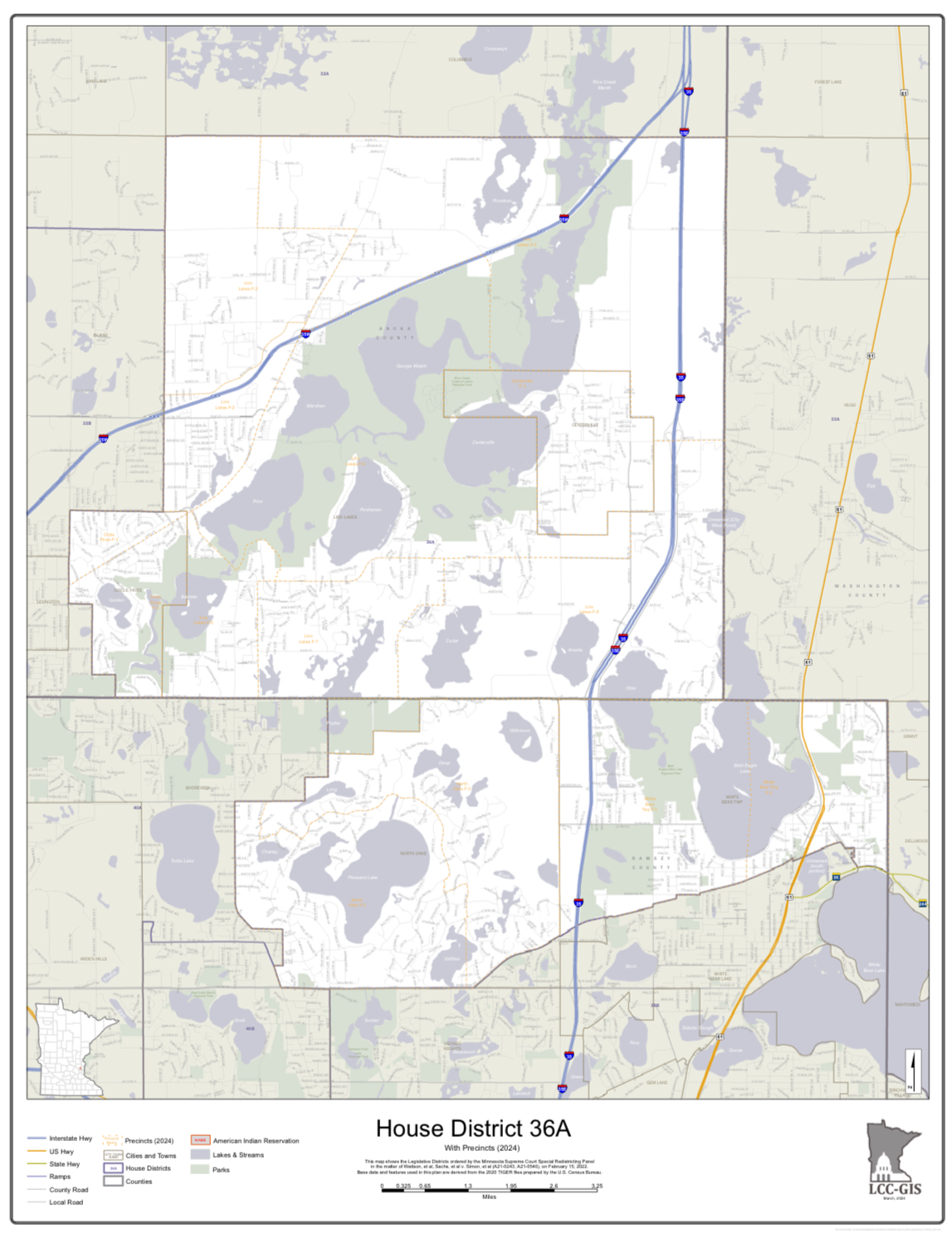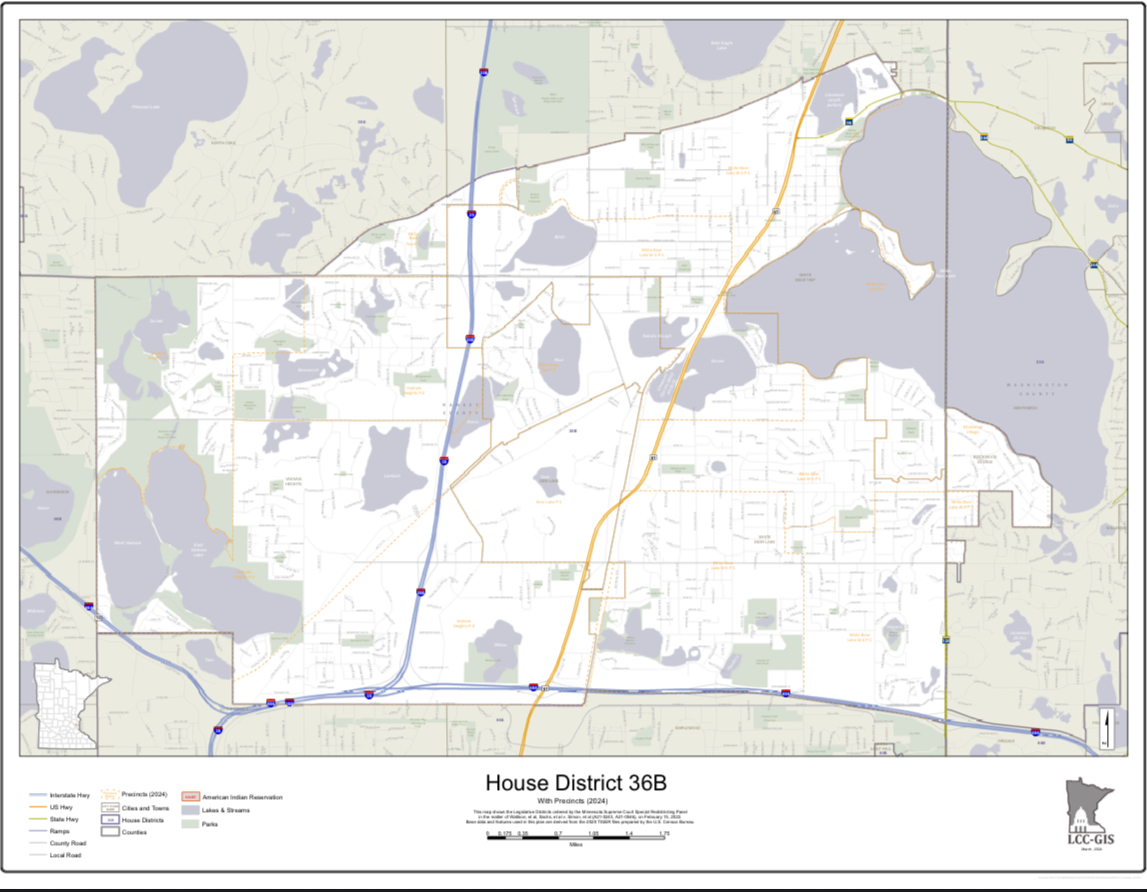“An educated populace is necessary for good governance. Being an informed citizen helps us make better choices and create strong communities.” – MN GOP CD5
SD36 Maps


Republican Platform
https://MNGOP-Platform-adopted-May_14_2022.pdf
Frequently Asked Questions
What is a BPOU?
- BPOU stands for Basic Political Organizational Unit.
- It consists of several precincts, but depending on population density, its geographical size can vary. In rural areas, it can be a county or multiple counties, but in a metro area, a single city can consist of multiple BPOUs.
- It is the smallest governing body of Republican organizations
- You will caucus with this group early in an election year
What is a WARD?
- A Ward is a geographic location, represented by a City Council Member who is elected to make laws that govern the city.
What is a PRECINCT?
- Precincts are the basic geographical areas for organizing and administering elections. They are established by the governing body of each city or town, or by the county board in unorganized territories.
- LEARN MORE
What is a PRECINCT CAUCUS?
- Precinct caucuses are meetings run by Minnesota’s political parties. They are the first in a series of meetings where parties may endorse candidates, select delegates, and set goals and values (called party platforms).
- LEARN MORE
What is a CONGRESSIONAL DISTRICT?
- Congressional districts (CDs) are the 435 areas from which members are elected to the U.S. House of Representatives. Each congressional district is to be as equal in population to all other congressional districts in a state as practicable. There are currently 8 Congressional Districts in Minnesota.
- Each consists of a number of BPOUs, who help endorse one candidate
- Congressional districts are delineated every 10 years based on the newest U.S. Census.
- Each congressional district has one U.S. House Representative.
Who are our LEGISLATORS?
What is a STATE SENATE DISTRICT?
- Minnesota State Senate Districts are determined by geographic location based on U.S. census data every 10 years. Each Senate District sends one State Senator to the Minnesota State Senate.
What is a STATE HOUSE DISTRICT?
- State House Districts are determined by State Senate Districts, which are determined by geographic location based on U.S. census data every 10 years. Two House Districts make up one State Senate District. Each House District sends one State Representative to the Minnesota House of Representatives.
What is REDISTRICTING?
- Redistricting is the process of redrawing the boundaries of election districts to ensure that the people of each district are equally represented.
- Redistricting is done in the United States after the completion of Congressional reapportionment, which decides how many seats each state has in the 435 member House of Representatives. Reapportionment happens following the Decennial Census.
- In Minnesota, the state legislature has constitutional responsibility for redistricting Minnesota’s Congressional districts, as well as Minnesota Senate and House districts, and Metropolitan Council districts. Local governments are responsible for redistricting other election districts:
- County boards are responsible for redistricting county commissioner districts
- City councils are responsible for redistricting city wards
- School boards are responsible for redistricting board member districts.
- In addition, during the redistricting time period, cities and townships will establish (or reestablish) their precinct boundaries as part of the redistricting process, as will counties that have unorganized territory.
- LEARN MORE
What is the PCR PROGRAM?
- PCR stands for Political Contribution Refund. Simply put, if you contribute up to $50 ($100 as a married couple) to a political candidate or party, the state of Minnesota will reimburse you for that contribution amount.
- LEARN MORE
Other Resources
GOP WEBSITES
- MN GOP
- National GOP
- 3rd Congressional District (CD3)
- 4th Congressional District (CD4)
- SD38
- SD39
- SD43
- SD46
- SD50
- SD51
- Minneapolis Republican Party
NEWS
CONSERVATIVE ORGANIZATIONS
